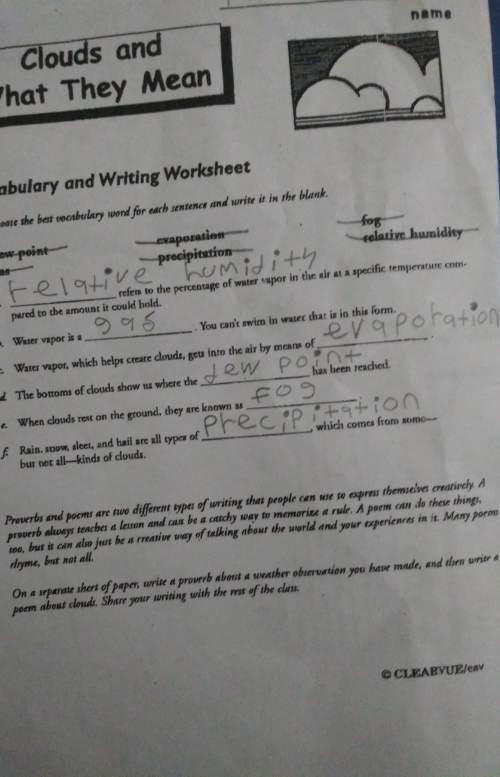
Physics, 18.04.2020 01:43 luv4appleallday
Planets are not uniform inside. Normally, they are densest at the center and have decreasing density outward toward the surface. Model a spherically symmetric planet, with the same radius as the earth, as having a density that decreases linearly with distance from the center. Let the density be 1.70×104 kg/m3 at the center and 3200 kg/m3 at the surface.
What is the acceleration due to gravity at the surface of this planet?
g= m/s^2

Answers: 1


Another question on Physics

Physics, 21.06.2019 19:30
Describe the path of a ray that approaches a mirror parallel to the principal axis.
Answers: 2

Physics, 22.06.2019 01:10
Asteam power plant operates on an ideal reheat rankine cycle between the pressure limits of 15 mpa and 10 kpa. the mass flow rate of steam through the cycle is 12 kg/s. steam enters both stages of the turbine at 500°c. if the moisture content of the steam at the exit of the low-pressure turbine is not to exceed 10 percent, determine (a) the pressure at which reheating takes place, (b) the total rate of heat input in the boiler, and (c) the thermal efficiency of the cycle. also, show the cycle on a t-s diagram with respect to the saturation lines. (2.15 mpa; 45.0 mw; 42.6%)
Answers: 3

Physics, 22.06.2019 15:00
Astudent throws a water balloon with speed v0 from a height h = 1.76 m at an angle θ = 21° above the horizontal toward a target on the ground. the target is located a horizontal distance d = 9.5 m from the student’s feet. assume that the balloon moves without air resistance. use a cartesian coordinate system with the origin at the balloon's initial position. (a) what is the position vector, rtarge t, that originates from the balloon's original position and terminates at the target? put this in terms of h and d, and represent it as a vector using i and j. (b) in terms of the variables in the problem, determine the time, t, after the launch it takes the balloon to reach the target. your answer should not include h. (c) create an expression for the balloon's vertical position as a function of time, y(t), in terms of t, vo, g, and θ. (d) determine the magnitude of the balloon's initial velocity, v0, in meters per second, by eliminating t from the previous two expressions.
Answers: 3

Physics, 22.06.2019 19:00
Achild has maximum walking speed of 1.6 m/s. what is the length of the child's legs? 0.26 m
Answers: 2
You know the right answer?
Planets are not uniform inside. Normally, they are densest at the center and have decreasing density...
Questions

Business, 05.01.2021 23:30


Geography, 05.01.2021 23:30

Social Studies, 05.01.2021 23:30

Biology, 05.01.2021 23:30

English, 05.01.2021 23:30

Arts, 05.01.2021 23:30


English, 05.01.2021 23:30


History, 05.01.2021 23:30

Mathematics, 05.01.2021 23:30

Mathematics, 05.01.2021 23:30

Mathematics, 05.01.2021 23:30


Mathematics, 05.01.2021 23:30

Arts, 05.01.2021 23:30

Mathematics, 05.01.2021 23:30


English, 05.01.2021 23:30




